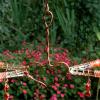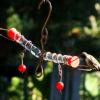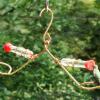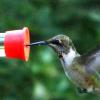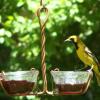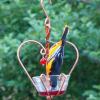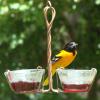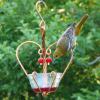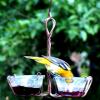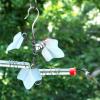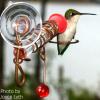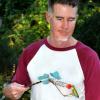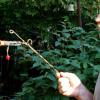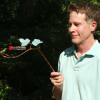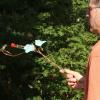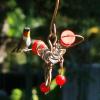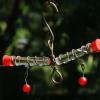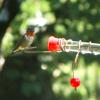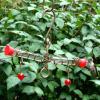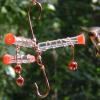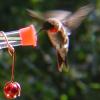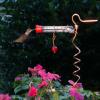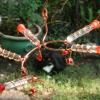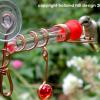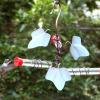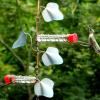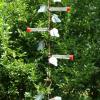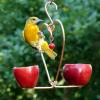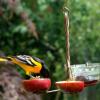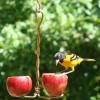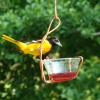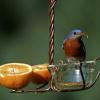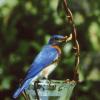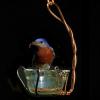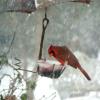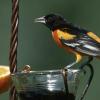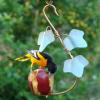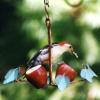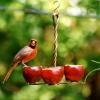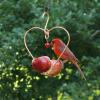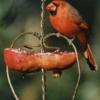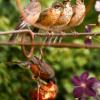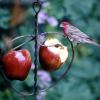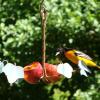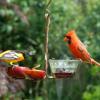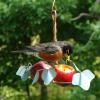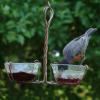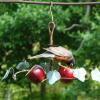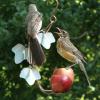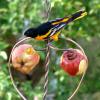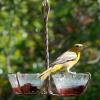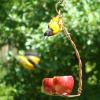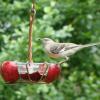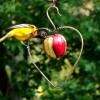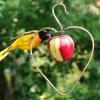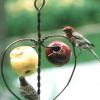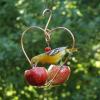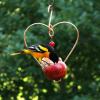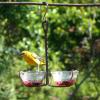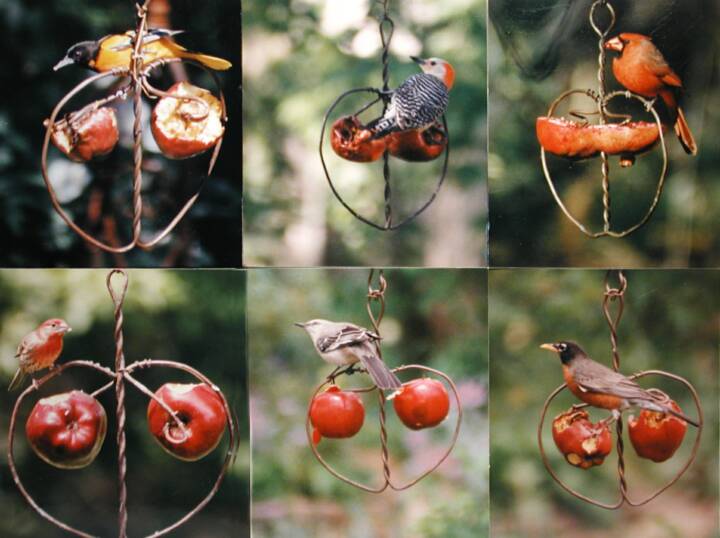 | ||||||
 | ||||||
H O L L A N D H I L L
B I R D F E E D E R S . COM
F A Q's AND P H O T O S
The History of
Holland Hill Birdfeeders
HOLLAND HILL DESIGN is a home grown business that grew from the simple idea that the garden was a great place to use the decorative and durable metal - COPPER. Copper has an uncommon resilience among metals; it is malleable (it bends but doesn't break) and it is extremely slow oxidizing (it doesn't rust). Plus its color provides beauty that deepens with age.
Holland Hill is also a place, a garden behind the home of the artists. The garden is a mix between a wild secret garden and an English cottage/Japanese garden and it is the testing ground for all Holland Hill’s birdfeeder designs. With flowing water, flowering shrubs, spring bulbs, Japanese maples, and hostas it is a true oasis for birds and people in the middle of the city. Observed year round from their 2nd story home office window, their feeders hang from an iron rod pergola at the front edge of the garden.
When John Hill, co-founder of Holland Hill, was growing up he worked for his father in sheet metal and helped fabricate and install many copper roofs and hoods. This gave him the ability to work up in copper the ideas he had for birdfeeders and other decorative Copper Ivy items. In 1989 he introduced them at the Dallas Gift Market with great success and partnered with David Holland (an art major with a business minor) to help produce his products and help him run the business. His copper designs were picked up by companies such as Neiman-Marcus Catalog, and Pottery Barn Catalog.
In 1990 John was talking with an elderly friend on the bus one day and she told him about her mother feeding birds some apples from their window sill. Soon John invented his ingenious Johnny Apple Feeder design (APPL) and his birdfeeder business began to blossom. Using copper and Copper Ivy decoratively to feed fruit to the birds became one of the specialties of Holland Hill Design. Many different fruit feeder designs followed. In 1991 John began focusing on hummingbird feeder design and began producing the Copper Ivy Hummingbird Feeder (HMBF) that is still his most popular design today.
Soon a whole line of beautiful, functional and durable copper hummingbird feeders took wing. His feeders now grace gardens from coast to coast and can be found at fine birding retailers across the US and Canada.
Holland Hill Birdfeeders are proudly hand made in the USA.
THE DURABILITY OF COPPER
One of the most resilient metals on Earth, copper doesn’t rust or become brittle and crack like plastic or wooden feeders do. Our feeders’ functionality and durability make them heirloom quality - feeders you can hand down to your children and grandchildren.
MADE IN THE USA
All our feeders are made by the hands of talented coppersmiths in Oklahoma City, Oklahoma USA.
WHAT FRUIT TO USE
We find apples to be the best fruit to use because a wide variety of birds eat them. Oranges are a favorite of Orioles. You can also use grape clusters. Cardinals love pomegranates and hard dinner rolls can be spun on the coils too.
WHEN TO START
Early spring is the best time to put out your feeder. That is when birds start looking for nest sites and if you put out a ready source of food, they are more likely to nest in your area. When mama and papa birds have nestlings to feed, they will feed on the apples, fly back to the nest to feed their young and repeat this many times a day until their babies fledge the nest. Then you will often see the parents bring their young to your apple feeders and feed their young right in front of you.
TO USE YOUR FEEDER
First peel away a portion of the skin of the apple to give the birds access to the inside. Many birds that like apples don’t’ have a sharp enough beak to pierce thru the skin. If it’s hot and dry, score the open surface of the apple to keep it from developing a second skin. Position the apple over the tip of the corkscrew coil and push lightly to pierce thru, then applying light pressure spin the apple onto the coil. Then hang the feeder out where birds can see it.
FEEDING ORIOLES
You can also use our fruit feeders to feed Orioles their favorite fruit: the orange. Just cut an orange in half and spiral it on the coil open end up. Orioles will eat all the pulp right down to the peel. The FRUIT AND JELLY FEEDER (FRJL) gives you a removable cup to feed Orioles their other favorite food - grape jelly at the same time as the oranges. The cup’s copper clip lets you remove the cup for cleaning and filling then clips back securely in place.
FEEDING BLUEBIRDS
Bluebirds and other birds love eating mealworms from our food cups. The worms can’t climb out because of the slick sides. You can also put other foods in the cups such as peanut butter, suet, seed or water.
Information on our
Fruit & Jelly Feeders
EASY TO USE
Our feeders are very easy to refill and clean. The tubes slide out of the copper tendrils, then you pull off the red cap, fill the tube to the top with nectar, re-cap the tube and slide it back in the tendril. That’s it.!
CLEANLINESS
The health of hummingbirds depends on the feeder’s filler… YOU!!! Always keep your feeders clean. Our tube system makes it easy. Just a quick rinse in hot water before refilling the tubes is all that is needed, because the birds go through the liquid before it has a chance to go bad. We offer a cleaning Brush (BRSH) and handy Vial Holder (VHDR) to make it easy to handle, the tubes for cleaning, re-fill and storage in the refrigerator.
HUMMINGBIRDS LOVE THEM !!!
Our customers say their hummingbirds always go through the food in our feeders before they even start feeding on other feeders in the yard. The reasons are simple:
1. The nectar is always fresher.
2. Our red caps and red marbles attract them like crazy, so there’s no need for the red dyes that commercial nectar makers use, which is unhealthy for the birds.
3. The tube feeder system closely mimics the tube shaped flowers that hummingbirds feed on in Nature.
NO DRIPPING
Our feeders don’t drip. Because of the horizontal position of our tubes when they’re in use, there isn’t the downward pressure of the weight of the nectar that makes other feeders drip. The small hole in our red caps also creates surface tension that keeps our feeders from dripping.
GREAT CUSTOMER TIPS
1. Get extra tubes and keep full ones in the fridge to have always ready to go when you need to replace empties outside.
2. When hummingbirds have gone, tilt the tubes up on the feeders and use them as a lovely bud vase
Information on our
Hummingbird Feeders
 | ||||||
 | ||||||
PHOTO GALLERY
PROUDLY MADE IN THE UNITED STATES OF AMERICA
Hummingbird
Fruit & Jelly
When viewing photos you can right click over them and save the pictures for promotional advertising.
Items with (*) are required.
*NAME
*Address, *City, *State, *Zipcode
*PHONE
*EMAIL
COMMENTS
